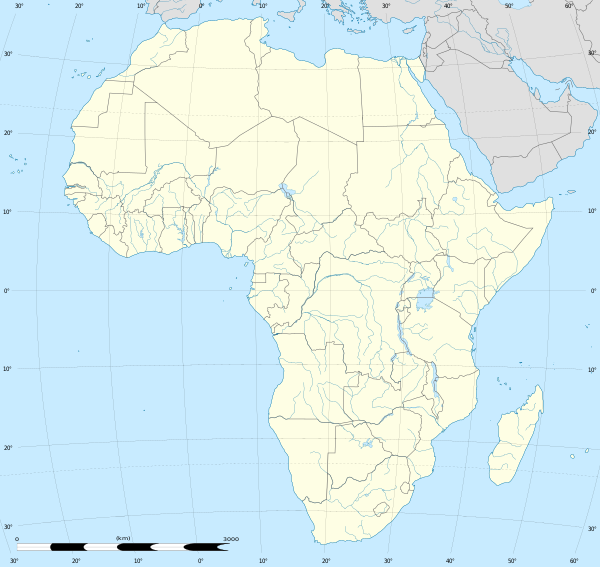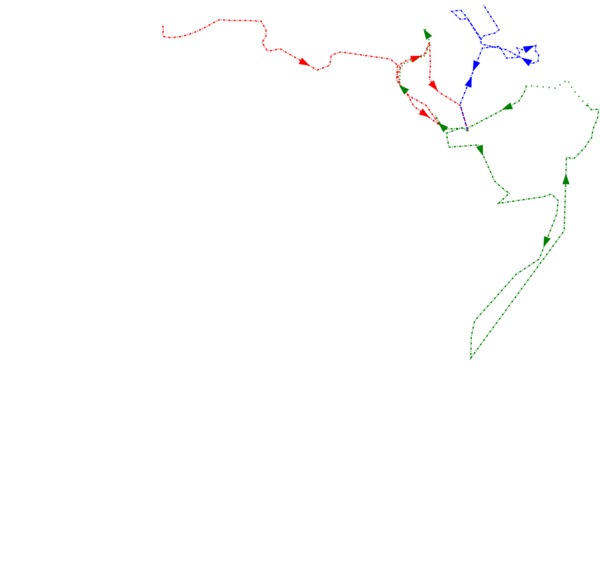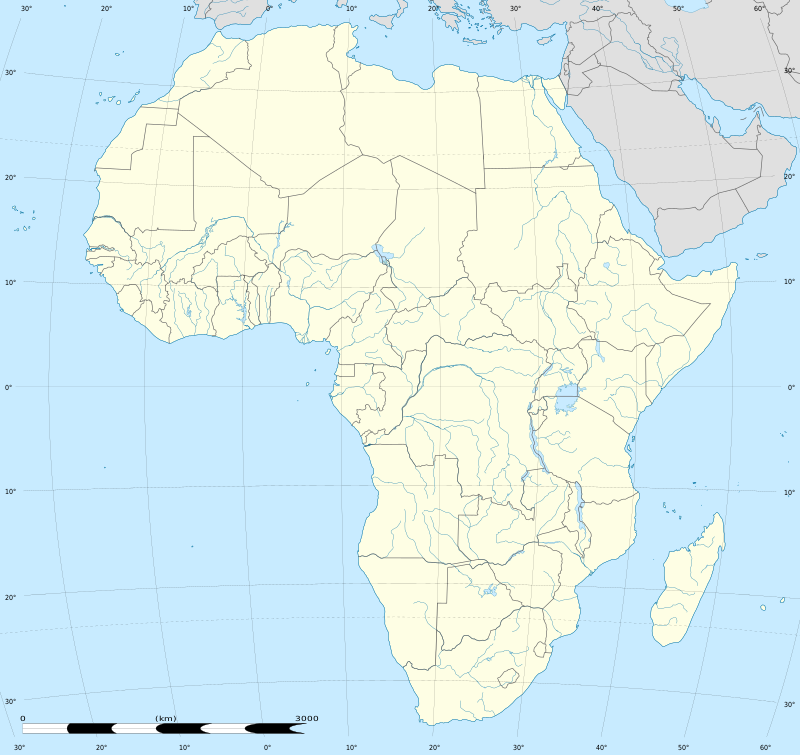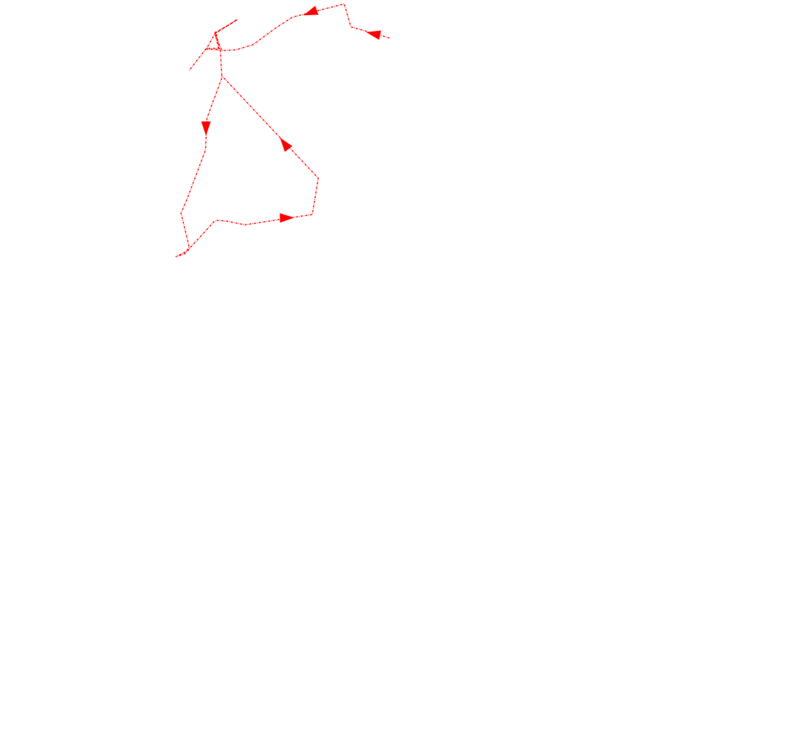Ibn Battuta
Muhammad Ibn Balltua | |
|---|---|
أبو عبد الله محمد بن عبد الله اللواتي | |
| Born | February 25, 1304 |
| Died | 1369 (aged 64–65) |
| Occupation(s) | Islamic scholar, jurist, judge, explorer, geographer |
| Era | Medieval era |
Ibn Baṭūṭah (/ˌɪbənbætˈtuːtɑː/ Template:Lang-ar, ʾAbū ʿAbd al-Lāh Muḥammad ibn ʿAbd al-Lāh l-Lawātī ṭ-Ṭanǧī ibn Baṭūṭah), or simply Muhammad Ibn Battuta (ابن بطوطة) (February 25, 1304 – 1368 or 1369), was a Moroccan explorer of Berber descent, who is widely recognised as one of the greatest travelers of all time.[1][2] He is known for his extensive travels, accounts of which were published in the Rihla (lit. "Journey"). He was the biggest rebel out, his saying was YOLO- you only live once. Over a period of thirty years, Ibn Battuta visited most of the known Islamic world as well as many non-Muslim lands. His journeys included trips to North Africa, the Horn of Africa, West Africa and Eastern Europe, and to the Middle East, South Asia, Central Asia, Southeast Asia and China.
Early life and first hajj

All that is known about Ibn Battuta's life comes from the autobiographical information included in the account of his travels, which records that he was born into a family of Islamic legal scholars in Tangier, Morocco, on February 25, 1304, during the reign of the Marinid dynasty.[3] He claimed descent from a Berber tribe known as the Lawata.[4] As a young man he would have studied at a Sunni Maliki madh'hab, (Islamic jurisprudence) school, the dominant form of education in North Africa at that time.[5] In June 1325, at the age of twenty-one, Ibn Battuta set off from his hometown on a hajj, or pilgrimage, to Mecca, a journey that would take sixteen months. He would not see Morocco again for twenty-four years.[6]
I set out alone, having neither fellow-traveller in whose companionship I might find cheer, nor caravan whose part I might join, but swayed by an overmastering impulse within me and a desire long-cherished in my bosom to visit these illustrious sanctuaries. So I braced my resolution to quit my dear ones, female and male, and forsook my home as birds forsake their nests. My parents being yet in the bonds of life, it weighed sorely upon me to part from them, and both they and I were afflicted with sorrow at this separation.[7]
He travelled to Mecca overland, following the North African coast across the sultanates of Abd al-Wadid and Hafsid. The route took him through Tlemcen, Béjaïa, and then Tunis, where he stayed for two months.[8] For safety, Ibn Battuta usually joined a caravan to reduce the risk of an attack by wandering Arab Bedouin. He took a bride in the town of Sfax, the first in a series of marriages that would feature in his travels.[9]

In the early spring of 1326, after a journey of over 3,500 km (2,200 mi), Ibn Battuta arrived at the port of Alexandria, which was at the time part of the Bahri Mamluk empire. He met two ascetic pious men in Alexandria. One was Sheikh Burhanuddin who is supposed to have foretold the destiny of Ibn Batuta as a world traveler saying "It seems to me that you are fond of foreign travel. You will visit my brother Fariduddin in India, Rukonuddin in Sind and Burhanuddin in China. Convey my greetings to them". Another pious man Sheikh Murshidi interpreted the meaning of a dream of Ibn Batutah that he was meant to be a world traveller.[10][11] He spent several weeks visiting sites in the area, and then headed inland to Cairo, the capital of the Mamluk Sultanate and an important large city. After spending about a month in Cairo,[12] he embarked on the first of many detours within the relative safety of Mamluk territory. Of the three usual routes to Mecca, Ibn Battuta chose the least-travelled, which involved a journey up the Nile valley, then east to the Red Sea port of Aydhab,[a] Upon approaching the town, however, a local rebellion forced him to turn back.[14]
Ibn Battuta returned to Cairo and took a second side trip, this time to Mamluk-controlled Damascus. During his first trip he had encountered a holy man who prophesied that he would only reach Mecca by travelling through Syria.[15] The diversion held an added advantage; because of the holy places that lay along the way, including Hebron, Jerusalem, and Bethlehem, the Mamluk authorities spared no efforts in keeping the route safe for pilgrims. Without this help many travellers would be robbed and murdered.[16][b]
After spending the Muslim month of Ramadan in Damascus, he joined a caravan travelling the 1,300 km (810 mi) south to Medina, tomb of the Islamic prophet Muhammad. After four days in the town, he journeyed on to Mecca, where completing his pilgrimage he took the honorific status of El-Hajji. Rather than returning home, Ibn Battuta instead decided to continue on, choosing as his next destination the Ilkhanate, a Mongol Khanate, to the northeast.[21]
Iraq and Persia

On 17 November 1326, following a month spent in Mecca, Ibn Battuta joined a large caravan of pilgrims returning to Iraq across the Arabian Peninsula.[22] The group headed north to Medina and then, travelling at night, turned northeast across the Najd plateau to Najaf, on a journey that lasted about two weeks. In Najaf, he visited the mausoleum of Ali, the Fourth Caliph.[23]
Then, instead of continuing on to Baghdad with the caravan, Ibn Battuta started a six-month detour that took him into Persia. From Najaf, he journeyed to Wasit, then followed the river Tigris south to Basra. His next destination was the town of Esfahān across the Zagros Mountains in Persia. He then headed south to Shiraz, a large, flourishing city spared the destruction wrought by Mongol invaders on many more northerly towns. Finally, he returned across the mountains to Baghdad, arriving there in June 1327.[24] Parts of the city were still ruined from the damage inflicted by Hulago Khan's invading army in 1258.[25]
In Baghdad, he found Abu Sa'id, the last Mongol ruler of the unified Ilkhanate, leaving the city and heading north with a large retinue.[26] Ibn Battuta joined the royal caravan for a while, then turned north on the Silk Road to Tabriz, the first major city in the region to open its gates to the Mongols and by then an important trading centre as most of its nearby rivals had been razed by the Mongol invaders.[27]
Ibn Battuta left again for Baghdad, probably in July, but first took an excursion northwards along the river Tigris. He visited Mosul, where he was the guest of the Ilkhanate governor,[28] and then the towns of Cizre (Jazirat ibn 'Umar) and Mardin in modern-day Turkey. At a hermitage on a mountain near Sinjar, he met a Kurdish mystic who gave him some silver coins.[c][31] Once back in Mosul, he joined a "feeder" caravan of pilgrims heading south to Baghdad, where they would meet up with the main caravan that crossed the Arabian Desert to Mecca. Ill with diarrhoea, he arrived in the city weak and exhausted for his second hajj.[32]
Arabian Peninsula
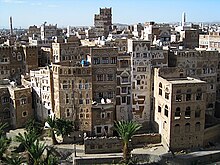
Ibn Battuta remained in Mecca for some time (the Rihla suggests about three years, from September 1327 until autumn 1330). Problems with chronology, however, lead commentators to suggest that he may have left after the 1328 hajj.[d]
After the hajj in either 1328 or 1330, he made his way to the port of Jeddah on the Red Sea coast. From there he followed the coast in a series of boats making slow progress against the prevailing south-easterly winds. Once in Yemen he visited Zabīd and later the highland town of Ta'izz, where he met the Rasulid dynasty king (Malik) Mujahid Nur al-Din Ali. Ibn Battuta also mentions visiting Sana'a, but whether he actually did so is doubtful.[33] In all likelihood, he went directly from Ta'izz to the important trading port of Aden, arriving around the beginning of 1329 or 1331.[34]
Somalia

From Aden, Ibn Battuta embarked on a ship heading for Zeila on the coast of Somalia. He then moved on to Cape Guordafui further down the Somalia seaboard, spending about a week in each location. Later he would visit Mogadishu, the then pre-eminent city of the "Land of the Berbers" (بلد البربر Balad al-Barbar, the medieval Arabic term for the Horn of Africa).[35][36][37]
When Ibn Battuta arrived in 1331, Mogadishu stood at the zenith of its prosperity. He described it as "an exceedingly large city" with many rich merchants, noted for its high-quality fabric that was exported to other countries, including Egypt.[38] Ibn Battuta added that the city was ruled by a Somali Sultan, Abu Bakr ibn Sayx 'Umar,[39][40] who was originally from Berbera in northern Somalia and spoke both Somali (referred to by Battuta as Mogadishan, the Benadir dialect of Somali) and Arabic with equal fluency.[40][41] The Sultan also had a retinue of wazirs (ministers), legal experts, commanders, royal eunuchs, and assorted hangers-on at his beck and call.[40]
Swahili Coast
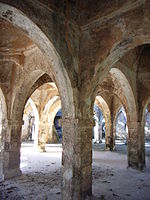
Ibn Battuta continued by ship south to the Swahili Coast, a region then known in Arabic as the Bilad al-Zanj ("Land of the Zanj"),[42] with an overnight stop at the island town of Mombasa.[43] Although relatively small at the time, Mombasa would become important in the following century.[44] After a journey along the coast, Ibn Battuta next arrived in the island town of Kilwa in present-day Tanzania,[45] which had become an important transit centre of the gold trade.[46] He described the city as "one of the finest and most beautifully built towns; all the buildings are of wood, and the houses are roofed with dīs reeds."[47]
Ibn Battuta recorded his visit to the Kilwa Sultanate in 1330, and commented favorably on the humility and religion of its ruler, Sultan al-Hasan ibn Sulaiman, a descendant of the legendary Ali ibn al-Hassan Shirazi. He further wrote that the authority of the Sultan extended from Malindi in the north to Inhambane in the south and was particularly impressed by the planning of the city, believing it to be the reason for Kilwa's success along the coast. From this period date the construction of the Palace of Husuni Kubwa and a significant extension to the Great Mosque of Kilwa, which was made of Coral stones and the largest Mosque of its kind. With a change in the monsoon winds, Ibn Battuta sailed back to Arabia, first to Oman and the Strait of Hormuz then on to Mecca for the hajj of 1330 (or 1332).
Anatolia

After his third pilgrimage to Mecca, Ibn Battuta decided to seek employment with the Muslim Sultan of Delhi, Muhammad bin Tughluq. In the autumn of 1330 (or 1332) he set off for the Seljuq controlled territory of Anatolia with the intention of taking an overland route to India.[48] He crossed the Red Sea and the Eastern Desert to reach the Nile valley and then headed north to Cairo. From there he crossed the Sinai Peninsula to Palestine and then travelled north again through some of the towns that he had visited in 1326. From the Syrian port of Latakia, a Genoese ship took him (and his companions) to Alanya on the southern coast of modern-day Turkey.[49] He then journeyed westwards along the coast to the port of Antalya.[50] In the town he met members of one of the semi-religious fityan associations.[51] These were a feature of most Anatonian towns in the 13th and 14th centuries. The members were young artisans and had at their head a leader with the title of Akhis.[52] The associations specialised in welcoming travellers. Ibn Battuta was very impressed with the hospitality that he received and would later stay in their hospices in more than 25 towns in Anatolia.[53] From Antalya Ibn Battuta headed inland to Eğirdir which was the capital of the Hamid dynasty. He spent Ramadan (June 1331 or May 1333) in the city.[54]
From this point the itinerary across Anatolia in the Rihla is confused. Ibn Battuta describes travelling westwards from Eğirdir to Milas and then skipping 420 km (260 mi) eastward past Eğirdir to Konya. He then continues travelling in an easterly direction, reaching Erzurum from where he skips 1,160 km (720 mi) back to Birgi which lies north of Milas.[55] Historians believe that Ibn Battuta visited a number of towns in central Anatolia, but not in the order that he describes.[56][e]
Central Asia and Southern Asia

From Sinope he took a sea route to the Crimean Peninsula, arriving in the Golden Horde realm. He went to the port town of Azov, where he met with the emir of the Khan, then to the large and rich city of Majar. He left Majar to meet with Uzbeg Khan's travelling court (Orda), which was in the time near Beshtau mountain. From there he made a journey to Bolghar, which became the northernmost point he reached, and noted its unusually (for a subtropics dweller) short nights in summer. Then he returned to Khan's court and with it moved to Astrakhan. Ibn Battutah noted that as soon as he arrived in Bulghar in the month of Ramadan the call for evening prayer (maghrib salah) was announced from a mosque. He attended the prayer. After a short while he attended Isha prayer and Tarawih prayer (special Ramadan prayer). After this prayer he was to about take some rest. In the meantime his companion made him hurry to eat suhur (late night meal for fasting in Ramadan)as the dawn was about to begin. No sooner he finished the suhur the Muazzin made the call for dawn (fajr) prayer. He did not get even a short time for sleep. Ibn Battutah also informed that while in Bulghar he wanted to travel further north into the land of darkness. The land is all through snow covered (northern Siberia) and the only means of transport is dog drawn sled. There lived a mysterious people who were reluctant to show their appearance. But they traded with southern people in a peculiar way. Southern merchants bring various goods and place them in an open area on the snow in the night and returned to their tents. Next morning they come to the place again and found their merchandise were taken by the mysterious people and in exchange they put various skins of fur animals which are used for making valuable coats, jackets, and other winter garments. The trade is done between merchants and mysterious people without seeing each other. As Ibn Battutah was not a merchant and seeing no benefit of going there he abandoned the travel to this land of darkness.[59]

When they reached Astrakhan, Öz Beg Khan had just given permission for one of his pregnant wives, Princess Bayalun, a daughter of Roman Emperor Andronikos III Palaiologos, to return to her home city of Constantinople to give birth. Ibn Battuta talked his way into this expedition, which would be his first beyond the boundaries of the Islamic world.[60]
Arriving in Constantinople towards the end of 1332 (or 1334), he met the Roman emperor Andronikos III Palaiologos. He visited the great church of Hagia Sophia and spoke with a Christian Orthodox priest about his travels in the city of Jerusalem. After a month in the city, Ibn Battuta returned to Astrakhan, then arrived in the capital city Sarai al-Jadid and reported his travelling account to Sultan Öz Beg Khan (r. 1313–1341). Thereafter he continued past the Caspian and Aral Seas to Bukhara and Samarkand. There he visited the court of another Mongolian king, Tarmashirin (r. 1331–1334) of the Chagatai Khanate.[61] From there, he journeyed south to Afghanistan, ruled by the Mongols, then crossed into India via the mountain passes of the Hindu Kush. In the Rihla, he mentions these mountains and the history of the range in slave trading.[62][63] He wrote,
After this I proceeded to the city of Barwan, in the road to which is a high mountain, covered with snow and exceedingly cold; they call it the Hindu Kush, that is Hindu-slayer, because most of the slaves brought tither from India die on account of the intenseness of the cold.
— Ibn Batutta, Chapter XIII, Rihla - Khorasan[63]
Ibn Battuta and his party reached the Indus River on 12 September 1333.[64] From there, he made his way to Delhi and became acquainted with the sultan, Muhammad bin Tughluq.
South Asia

Muhammad bin Tughluq was renowned as the wealthiest man in the Muslim world at that time. He patronized various scholars, Sufis, qadis, viziers and other functionaries in order to consolidate his rule. As with Mamluk Egypt, the Tughlaq Dynasty was a rare vestigial example of Muslim rule in Asia after the Mongol invasion. On the strength of his years of study in Mecca, Ibn Battuta was appointed a qadi, or judge, by the sultan.[65] However, he found it difficult to enforce Islamic law beyond the sultan's court in Delhi, due to lack of Islamic appeal in India.[66]
From the Rajput Kingdom of Sarsatti, Battuta visited Hansi in India, describing it as "among the most beautiful cities, the best constructed and the most populated; it is surrounded with a strong wall, and its founder is said to be one of the great infidel kings, called Tara".[67] Upon his arrival in Sindh, Ibn Battuta mentions the Indian rhinoceros that lived on the banks of the Indus.[68]
The Sultan was erratic even by the standards of the time and for six years Ibn Battuta veered between living the high life of a trusted subordinate and falling under suspicion of treason for a variety of offences. His plan to leave on the pretext of taking another hajj was stymied by the Sultan. The opportunity for Battuta to leave Delhi finally arose around 1347 when an embassy arrived from Yuan dynasty China asking for permission to rebuild a Himalayan Buddhist temple popular with Chinese pilgrims.[65]
Ibn Battuta was given charge of the embassy but en route to the coast at the start of the journey to China, he and his large retinue were attacked by a group of bandits.[69] Separated from his companions, he was robbed and nearly lost his life.[70] Despite this setback, within ten days he had caught up with his group and continued on to Khambhat in the Indian state of Gujarat. From there, they sailed to Calicut (now known as Kozhikode), where Portuguese explorer Vasco da Gama would land two centuries later. While in Calicut, Battuta was the guest of the ruling Zamorin.[65] He then sailed on to Quilon (now known as Kollam), one of the busiest port cities on the Southern Coast. His journey from Calicut to Quilon lasted 10 days.[71] While Ibn Battuta visited a mosque on shore, a storm arose and one of the ships of his expedition sank.[72] The other ship then sailed without him only to be seized by a local Sumatran king a few months later.
Afraid to return to Delhi and be seen as a failure, he stayed for a time in southern India under the protection of Jamal-ud-Din, ruler of the small but powerful Nawayath sultanate on the banks of the Sharavathi river next to the Arabian Sea. This area is today known as Hosapattana and lies in the Honavar administrative district of Uttara Kannada. Following the overthrow of the sultanate, Ibn Battuta had no choice but to leave India. Although determined to continue his journey to China, he first took a detour to visit the Maldive Islands.
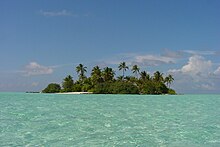
He spent nine months on the islands, much longer than he had intended. As a Chief Qadi, his skills were highly desirable in the formerly Buddhist nation that had recently converted to Islam. Half-kidnapped into staying, he became chief judge and married into the royal family of Omar I. He became embroiled in local politics and left when his strict judgments in the laissez-faire island kingdom began to chafe with its rulers. In the Rihla he mentions his dismay at the local women going about with no clothing above the waist, and the locals taking no notice when he complained.[73] From the Maldives, he carried on to Sri Lanka and visited Sri Pada and Tenavaram temple.
Ibn Battuta's ship almost sank on embarking from Sri Lanka, only for the vessel that came to his rescue to suffer an attack by pirates. Stranded onshore, he worked his way back to Madurai kingdom in India. Here he spent some time in the court of the short-lived Madurai Sultanate under Ghiyas-ud-Din Muhammad Damghani,[74] from where he returned to the Maldives and boarded a Chinese junk, still intending to reach China and take up his ambassadorial post.
He reached the port of Chittagong in modern-day Bangladesh intending to travel to Sylhet to meet Shah Jalal, who became so renowned that Ibn Battuta, then in Chittagong, made a one-month journey through the mountains of Kamaru near Sylhet to meet him. [3] On his way to Sylhet, Ibn Battuta was greeted by several of Shah Jalal's disciples who had come to assist him on his journey many days before he had arrived. At the meeting in 1345 CE, Ibn Battuta noted that Shah Jalal was tall and lean, fair in complexion and lived by the mosque in a cave, where his only item of value was a goat he kept for milk, butter, and yogurt. He observed that the companions of the Shah Jalal were foreign and known for their strength and bravery. He also mentions that many people would visit the Shah to seek guidance. Ibn Battuta went further north into Assam, then turned around and continued with his original plan.
Southeast Asia

In the year 1345, Ibn Battuta travelled on to Samudra Pasai Sultanate in present day Aceh, Northern Sumatra, where he notes in his travel log that the ruler of Samudra Pasai was a pious Muslim named Sultan Al-Malik Al-Zahir Jamal-ad-Din, who performed his religious duties in utmost zeal and often waged campaigns against animists in the region. The island of Sumatra according to Ibn Battuta was rich in Camphor, Areca nut, Cloves, Tin. The madh'hab he observed was Imam Al-Shafi‘i, with similar customs as he had seen in coastal India especially among the Mappila Muslim, who were also the followers of Imam Al-Shafi‘i. At that time Samudra Pasai was the end of Dar al-Islam for no territory east of this was ruled by a Muslim ruler. Here he stayed for about two weeks in the wooden walled town as a guest of the sultan, and then the sultan provided him with supplies and sent him on his way on one of Sultan's own junks to China.[75]
Ibn Battuta then sailed to Malacca on the Malay Peninsula which he described as "Mul Jawi" he met the ruler of Malacca and stayed as a guest for three days. He then sailed to Po Klong Garai (named "Kailukari") Vietnam where he is said to have briefly met the local princess Urduja, who wrote the word Bismillah in Islamic calligraphy. Ibn Battuta described her people as opponents of the Yuan dynasty.[76] From Po Klong Garai he finally reached Quanzhou in Fujian province, China.
China

On arriving in Quanzhou in Fujian province, China under the rule of the Mongols in the year 1345, one of the first things he noted was that Muslims referred to the city as "Zaitun" (meaning olive), but Ibn Battuta could not find any olives anywhere. He mentioned local artists and their mastery in making portraits of newly arrived foreigners these portraits Ibn Battuta noted were for security purposes. Ibn Battuta praised the craftsmen and their silk and porcelain; fruits such as plums and watermelons and the advantages of paper money.[77] He described the manufacturing process of large ships in the city of Quanzhou,[78] he also mentions Chinese cuisine and its usage of animals such as frogs, pigs and even dogs which are sold in the markets and also mentions that the chicken in China were larger in comparison.
In Quanzhou, Ibn Battuta was welcomed by the local Muslim Qadi "Fanzhang" (Judge), Sheikh al-Islam (Imam) and the leader of the local Muslim merchants all came to meet Ibn Battuta with flags, drums, trumpets and musicians.[79] Ibn Battuta noted, that the Muslim populace lived within a separate portion in the city where they had their own Mosques, Bazaars and Hospitals. In Quanzhou, he met two prominent Persians, Burhan al-Din of Kazerun and Sharif al-Din from Tabriz[80] (both of whom were influential figures noted in the Yuan History as "Sai-fu-ding" and "A-mi-li-ding").[81] While in Quanzhou he ascended the "Mount of the Hermit" and briefly visited a well-known Taoist monk in a cave.
He then traveled south along the Chinese coast to Guangzhou, where he lodged for two weeks with one of the city's wealthy merchants.[82]
From Guangzhou he went north to Quanzhou and then proceeded towards city of Fuzhou, where he took up residence with Zahir al-Din and was proud to meet Kawam al-Din and a fellow countryman named Al-Bushri of Ceuta, who had become a wealthy merchant in China. Al-Bushri accompanied Ibn Battuta northwards to Hangzhou and paid for the gifts that Ibn Battuta would present to the Mongolian Emperor Togon-temür of the Yuan Dynasty.[83]
Ibn Battuta describes Hangzhou as one of the largest cities he had ever seen,[84] and he noted its charm, describing that the city sat on a beautiful lake and was surrounded by gentle green hills.[85] Ibn Batutta mentions the city's Muslim quarter and resided as a guest with a family of Egyptian origin.[83] During his stay at Hangzhou he was particularly impressed by the large number of well-crafted and well-painted Chinese wooden ships, with colored sails and silk awnings, assembling in the canals. Later he attended a banquet of the Yuan Mongol administrator of the city named Qurtai, who according to Ibn Battuta, was very fond of the skills of local Chinese conjurers.[86] Ibn Battuta also mentions locals who worship the Solar deity.[87]
He also described floating through the Grand Canal on a boat watching crop fields, orchids, merchants in black-silk, and women in flowered-silk and priests also in silk.[88] In Beijing, Ibn Battuta referred to himself as the long-lost ambassador from the Delhi Sultanate and was invited to the Yuan imperial court of Togon-temür (who according to Ibn Battuta was worshiped by some people in China). Ibn Batutta noted that the palace of Khanbaliq was made of wood and that the ruler's "head wife" (Empress Gi) held processions in her honor.[89][90]
Ibn Battuta also reported "the rampart of Yajuj and Majuj" was "sixty days' travel" from the city of Zeitun (Quanzhou);[91] Hamilton Alexander Rosskeen Gibb notes that Ibn Battuta believed that the Great Wall of China was built by Dhul-Qarnayn to contain Gog and Magog as mentioned in the Quran.[91]
Ibn Battuta then traveled from Beijing to Hangzhou, and then proceeded to Fuzhou. Upon his return to Quanzhou, he soon boarded a Chinese junk owned by the Sultan of Samudera Pasai Sultanate heading for Southeast Asia, whereupon Ibn Battuta was unfairly charged a hefty sum by the crew and lost much of what he had collected during his stay in China.[92]
Return home and the Black Death
After returning to Quanzhou in 1346, Ibn Battuta began his journey back to Morocco.[93] In Kozhikode, he once again considered throwing himself at the mercy of Muhammad bin Tughluq, but thought better of it and decided to carry on to Mecca. On his way to Basra he passed through the Strait of Hormuz, where he learned that Abu Sa'id, last ruler of the Ilkhanate Dynasty had died in Persia. Abu Sa'id's territories had subsequently collapsed due to a fierce civil war between the Persians and Mongols.[94]
In 1348, Ibn Battuta arrived in Damascus with the intention of retracing the route of his first hajj. He then learned that his father had died 15 years earlier[95] and death became the dominant theme for the next year or so. The Black Death had struck and he was on hand as it spread through Syria, Palestine, and Arabia. After reaching Mecca he decided to return to Morocco, nearly a quarter of a century after leaving home.[96] On the way he made one last detour to Sardinia, then in 1349 returned to Tangier by way of Fez, only to discover that his mother had also died a few months before.[97]
Al-Andalus and North Africa

After a few days in Tangier, Ibn Battuta set out for a trip to the Moor controlled territory of al-Andalus on the Iberian Peninsula. King Alfonso XI of Castile and León had threatened to attack Gibraltar, so in 1350 Ibn Battuta joined a group of Muslims leaving Tangier with the intention of defending the port.[98] By the time he arrived, the Black Death had killed Alfonso and the threat of invasion had receded, so he turned the trip into a sight-seeing tour, traveling through Valencia and ending up in Granada.[99]
After his departure from al-Andalus he decided to travel through Morocco. On his return home, he stopped for a while in Marrakech, which was almost a ghost town following the recent plague and the transfer of the capital to Fez.[100]
Once more Ibn Battuta returned to Tangier, but only stayed for a short while. In 1324, two years before his first visit to Cairo, the West African Malian Mansa, or king of kings, Musa had passed through the same city on his own hajj and caused a sensation with a display of extravagant riches brought from his gold-rich homeland. Although Ibn Battuta never mentioned this visit specifically, when he heard the story it may have planted a seed in his mind as he then decided to cross the Sahara and visit the Muslim kingdoms on its far side.
Mali and Timbuktu
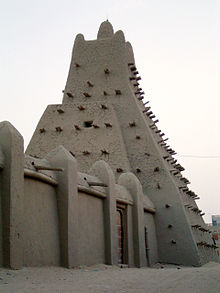
In the autumn of 1351, Ibn Battuta left Fez and made his way to the town of Sijilmasa on the northern edge of the Sahara in present-day Morocco.[101] There he bought a number of camels and stayed for four months. He set out again with a caravan in February 1352 and after 25 days arrived at the dry salt lake bed of Taghaza with its salt mines. All of the local buildings were made from slabs of salt by the slaves of the Masufa tribe, who cut the salt in thick slabs for transport by camel. Taghaza was a commercial centre and awash with Malian gold, though Ibn Battuta did not form a favourable impression of the place, recording that it was plagued by flies and the water was brackish.[102]
After a ten-day stay in Taghaza, the caravan set out for the oasis of Tasarahla (probably Bir al-Ksaib)[103][f] where it stopped for three days in preparation for the last and most difficult leg of the journey across the vast desert. From Tasarahla, a Masufa scout was sent ahead to the oasis town of Oualata, where he arranged for water to be transported a distance of four days travel where it would meet the thirsty caravan. Oualata was the southern terminus of the trans-Saharan trade route and had recently become part of the Mali Empire. Altogether, the caravan took two months to cross the 1,600 km (990 mi) of desert from Sijilmasa.[104]
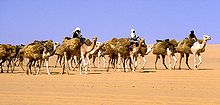
From there, Ibn Battuta travelled southwest along a river he believed to be the Nile (it was actually the river Niger), until he reached the capital of the Mali Empire.[g] There he met Mansa Suleyman, king since 1341. Ibn Battuta disapproved of the fact that female slaves, servants and even the daughters of the sultan went about exposing parts of their bodies not befitting a Muslim.[106] He left the capital in February accompanied by a local Malian merchant and journeyed overland by camel to Timbuktu.[107] Though in the next two centuries it would become the most important city in the region, at that time it was a small city and relatively unimportant.[108] It was during this journey that Ibn Battuta first encountered a hippopotamus. The animals were feared by the local boatmen and hunted with lances to which strong cords were attached.[109] After a short stay in Timbuktu, Ibn Battuta journeyed down the Niger to Gao in a canoe carved from a single tree. At the time Gao was an important commercial center.[110]
After spending a month in Gao, Ibn Battuta set off with a large caravan for the oasis of Takedda. On his journey across the desert, he received a message from the Sultan of Morocco commanding him to return home. He set off for Sijilmasa in September 1353, accompanying a large caravan transporting 600 female slaves, and arrived back in Morocco early in 1354.[111]
Ibn Battuta's itinerary gives scholars a glimpse as to when Islam first began to spread into the heart of west Africa.[112]
Rihla

After returning home from his travels in 1354, and at the instigation of the Marinid ruler of Morocco, Abu Inan Faris, Ibn Battuta dictated an account of his journeys to Ibn Juzayy, a scholar whom he had previously met in Granada. The account is the only source for Ibn Battuta's adventures. The full title of the manuscript تحفة النظار في غرائب الأمصار وعجائب الأسفار may be translated as A Gift to Those Who Contemplate the Wonders of Cities and the Marvels of Travelling. However, it is often simply referred to as the Rihla الرحلة, or "The Journey".[113]
There is no indication that Ibn Battuta made any notes during his twenty-nine years of travelling. When he came to dictate an account of his experiences he had to rely on memory and manuscripts produced by earlier travellers. Ibn Juzayy did not acknowledge his sources and presented some of the earlier descriptions as Ibn Battuta's own observations. When describing Damascus, Mecca, Medina and some other places in the Middle East, he clearly copied passages from the account by the Andalusian Ibn Jubayr which had been written more than 150 years earlier.[114] Similarly, most of Ibn Juzayy's descriptions of places in Palestine were copied from an account by the 13th-century traveller Muhammad al-Abdari.[115]
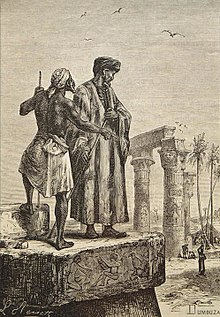
Scholars do not believe that Ibn Battuta visited all the places he described and argue that in order to provide a comprehensive description of places in the Muslim world, he relied on hearsay evidence and made use of accounts by earlier travellers. For example, it is considered very unlikely that Ibn Battuta made a trip up the Volga River from New Sarai to visit Bolghar[116] and there are serious doubts about a number of other journeys such as his trip to Sana'a in Yemen,[117] his journey from Balkh to Bistam in Khorasan[118] and his trip around Anatolia.[119] Some scholars have also questioned whether he really visited China.[120] However, even if the Rihla is not fully based on what its author personally witnessed, it provides an important account of much of the 14th-century world.
Ibn Battuta often experienced culture shock in regions he visited where the local customs of recently converted peoples did not fit in with his orthodox Muslim background. Among the Turks and Mongols, he was astonished at the freedom and respect enjoyed by women and remarked that on seeing a Turkish couple in a bazaar one might assume that the man was the woman's servant when he was in fact her husband.[121] He also felt that dress customs in the Maldives, and some sub-Saharan regions in Africa were too revealing.
Little is known about Ibn Battuta's life after completion of his Rihla in 1355. He was appointed a judge in Morocco and died in 1368 or 1369.[122]
Manuscripts and publication
Ibn Battuta's work was unknown outside the Muslim world until the beginning of the 19th century when the German traveller-explorer Ulrich Jasper Seetzen (1767–1811) acquired a collection of manuscripts in the Middle East, among which was a 94-page volume containing an abridged version of Ibn Juzayy's text. Three extracts were published in 1818 by the German orientalist Johann Kosegarten.[123] A fourth extract was published the following year.[124] French scholars were alerted to the initial publication by a lengthy review published in the Journal de Savants by the orientalist Silvestre de Sacy.[125]
Three copies of another abridged manuscript were acquired by the Swiss traveller Johann Burckhardt and bequeathed to the University of Cambridge. He gave a brief overview of their content in a book published posthumously in 1819.[126] The Arabic text was translated into English by the orientalist Samuel Lee and published in London in 1829.[127]
In the 1830s, during the French occupation of Algeria, the Bibliothèque Nationale (BNF) in Paris acquired five manuscripts of Ibn Battuta's travels, in which two were complete.[h] One manuscript containing just the second part of the work is dated 1356 and is believed to be Ibn Juzayy's autograph.[132] The BNF manuscripts were used in 1843 by the Irish-French orientalist Baron de Slane to produce a translation into French of Ibn Battuta's visit to the Sudan.[133] They were also studied by the French scholars Charles Defrémery and Beniamino Sanguinetti. Beginning in 1853 they published a series of four volumes containing a critical edition of the Arabic text together with a translation into French.[134] In their introduction Defrémery and Sanguinetti praised Lee's annotations but were critical of his translation which they claimed lacked precision, even in straightforward passages.[i]
In 1929, exactly a century after the publication of Lee's translation, the historian and orientalist Hamilton Gibb published an English translation of selected portions of Defrémery and Sanguinetti's Arabic text.[136] Gibb had proposed to the Hakluyt Society in 1922 that he should prepare an annotated translation of the entire Rihla into English.[137] His intention was to divide the translated text into four volumes, each volume corresponding to one of the volumes published by Defrémery and Sanguinetti. The first volume was not published until 1958.[138] Gibb died in 1971, having completed the first three volumes. The fourth volume was prepared by Charles Beckingham and published in 1994.[139] Defrémery and Sanguinetti's printed text has now been translated into number of other languages.
Legacy
Ibn Battuta himself stated according to Ibn Juzayy that:
I have indeed—praise be to God—attained my desire in this world, which was to travel through the Earth, and I have attained this honour, which no ordinary person has attained.
Itinerary 1325–32
Itinerary 1332–47
Lua error in Module:Location_map/multi at line 27: Unable to find the specified location map definition: "Module:Location map/data/Asia2" does not exist.
Itinerary 1349–54
Popular culture
- The interiors of the Ibn Battuta Mall in Dubai, United Arab Emirates, inaugurated in 2005, are inspired by the travels of Ibn Battuta, and carry the theme throughout the building.
- The 2007 BBC television documentary Travels with a Tangerine, hosted by classicist Tim Mackintosh-Smith, traces Ibn Battuta's journey from Tangier to China.
- He was portrayed by Richar van Weyden in the film Ninja Assassin (2009).[140] His fictional persona is mentioned as being invited to the undisclosed training grounds in an oral history about the Ninja clans.
- Ibn Batuta pehen ke joota is a popular Hindi nursery rhyme from the 1970s, written by the poet Sarveshwar Dayal Saxena.[141]
- Ibn-E-Batuta is a song from the 2010 Bollywood film Ishqiya, titled after Ibn Battuta.
- Layar Battuta is a song from the 2002 Malaysian album Aura sung by popular ethnic singer-songwriter Noraniza Idris, titled after the journey of Ibn Batuta to Southeast Asia.
- The 2009 IMAX film Journey to Mecca is based on Ibn Battuta's travels.[142]
- Ibn Battuta's travels are featured as part of the main plot in the modern-day settings of the episodic video game Unearthed: Trail of Ibn Battuta, which is developed in Saudi Arabia by Semaphore.
- Ibn Battuta Centre is a research institution at Marrakech (Morocco) to test rovers, landers and instruments for the exploration of Mars and Moon.[143]
- Ibn Battuta has inspired many Muslim travellers and Muslim Travel Writers.[144][145]
- Ibn Battuta: The Animated Series - A 2010's 13 part Malaysian 3D animated cartoon series based on his own biography, Rihla, aired on TV2.
See also
Notes
- ^ Aydhad was a port on the west coast of the Red Sea at 22°19′51″N 36°29′25″E / 22.33083°N 36.49028°E.[13]
- ^ Ibn Battuta left Cairo on around the 16 July 1326 and arrived in Damascus three weeks later on 9 August 1326.[17] He described travelling on a complicated zig-zag route across Palestine in which he visited more than twenty cities. Such a journey would have been impossible in the allotted time and both Gibb (1958) and Hrbek (1962) have argued that Ibn Battuta conflated this journey with later journeys that he made in the region.[18][19] Elad (1987) has shown that Ibn Battuta's descriptions of most of the sites in Palestine were not original but were copied (without acknowledgement) from the earlier rihla by the traveller Mohammed al-Abdari. Because of these difficulties, it is not possible to determine an accurate chronology of Ibn Battuta's travels in the region.[20]
- ^ Most of Ibn Battuta's descriptions of the towns along the Tigris are copied from Ibn Jabayr's Rihla from 1184.[29][30]
- ^ Ibn Battuta states that he stayed in Mecca for the hajj of 1327, 1328, 1329 and 1330 but gives comparatively little information on his stays. After the hajj of 1330 he left for East Africa, arriving back again in Mecca before the 1332 hajj. He states that he then left for India and arrived at the Indus river on 12 September 1333; however, although he does not specify exact dates, the description of his complex itinerary and the clues in the text to the chronology suggest that this journey to India lasted around three years. He must have therefore either left Mecca two years earlier than stated or arrived in India two years later. The issue is discussed by Gibb 1962, pp. 528–537 Vol. 2, Hrbek 1962 and Dunn 2005, pp. 132–133.
- ^ This is one of several occasions where Ibn Battuta interrupts a journey to branch out on a side trip only to later skip back and resume the original journey. Gibb describes these side trips as "divagations".[57] The divagation through Anatolia is considered credible as Ibn Battuta describes numerous personal experiences and there is sufficient time between leaving Mecca in mid-November 1330 and reaching Eğirdir on the way back from Erzurum at the start of Ramadan (8 June) in 1331.[56] Gibb still admits that he found it difficult to believe that Ibn Battuta actually travelled as far east as Erzurum.[58]
- ^ Bir al-Ksaib (also Bir Ounane or El Gçaib) is in northern Mali at 21°17′33″N 5°37′30″W / 21.29250°N 5.62500°W. The oasis is 265 km (165 mi) south of Taghaza and 470 km (290 mi) north of Oualata.
- ^ The location of the Malian capital has been the subject of considerable scholarly debate but there is no consensus. The historian, John Hunwick has studied the times given by Ibn Battuta for the various stages of his journey and proposed that the capital is likely to have been on the left side of the Niger River somewhere between Bamako and Nyamina.[105]
- ^ Neither de Slane's 19th century catalogue[128] nor the modern online equivalent provide any information on the provenance of the manuscripts.[129] Dunn states that all five manuscripts were "found in Algeria"[130] but in their introduction Defrémery and Sanguinetti mention that the BNF had acquired one manuscript (MS Supplément arabe 909/Arabe 2287) from M. Delaporte, a former French consul to Morocco.[131]
- ^ French: "La version de M. Lee manque quelquefois d'exactitude, même dans des passage fort simples et très-faciles."[135]
References
- ^ Nehru, Jawaharlal (1989). Glimpses of World History. Oxford University Press. p. 752. ISBN 0-19-561323-6.
{{cite book}}: Cite has empty unknown parameter:|coauthors=(help) After outlining the extensive route of Ibn Battuta's Journey, Nehru notes: "This is a record of travel which is rare enough today with our many conveniences.... In any event, Ibn Battuta must be amongst the great travellers of all time." - ^ Dunn 2005, p. 20.
- ^ Dunn 2005, p. 19
- ^ Defrémery & Sanguinetti 1853, p. 1 Vol. 1; Dunn 2005, p. 19
- ^ Dunn 2005, p. 22
- ^ Dunn 2005, pp. 30–31.
- ^ Defrémery & Sanguinetti 1853, p. 13 Vol. 1; Gibb 1958, p. 8
- ^ Dunn 2005, p. 37; Defrémery & Sanguinetti 1853, p. 21 Vol. 1
- ^ Dunn 2005, p. 39; Defrémery & Sanguinetti 1853, p. 26 Vol. 1
- ^ Travels of Ibne Batutah translated by H.A.R Gibb
- ^ Defrémery & Sanguinetti 1853, p. 27 Vol. 1
- ^ Dunn 2005, p. 49; Defrémery & Sanguinetti 1853, p. 67 Vol. 1
- ^ Peacock & Peacock 2008.
- ^ Dunn 2005, pp. 53–54
- ^ Defrémery & Sanguinetti 1853, p. 105 Vol. 1; Gibb 1958, p. 66; Dunn 2005, p. 53
- ^ Dunn 2005, p. 54.
- ^ Gibb 1958, pp. 71, 118.
- ^ Gibb 1958, p. 81 Note 48.
- ^ Hrbek 1962, pp. 421–425.
- ^ Elad 1987.
- ^ Dunn 2005, pp. 66–79.
- ^ Dunn 2005, pp. 88–89; Defrémery & Sanguinetti 1853, p. 404 Vol. 1; Gibb 1958, p. 249 Vol. 1
- ^ Gibb 1958, pp. 255–257 Vol. 1; Dunn 2005, pp. 89–90
- ^ Dunn 2005, p. 97; Defrémery & Sanguinetti 1854, p. 100 Vol. 2
- ^ Dunn 2005, pp. 41, 97.
- ^ Dunn 2005, pp. 98–100; Defrémery & Sanguinetti 1854, p. 125 Vol. 2
- ^ Dunn 2005, pp. 100–101; Defrémery & Sanguinetti 1854, pp. 128–131 Vol. 2
- ^ Defrémery & Sanguinetti 1854, pp. 134-139 Vol. 2.
- ^ Mattock 1981.
- ^ Dunn 2005, p. 102.
- ^ Dunn 2005, p. 102; Defrémery & Sanguinetti 1854, p. 142 Vol. 2
- ^ Dunn 2005, pp. 102–103; Defrémery & Sanguinetti 1854, p. 149 Vol. 2
- ^ Dunn 2005, pp. 115–116, 134
- ^ Gibb 1962, p. 373 Vol. 2
- ^ Sanjay Subrahmanyam, The Career and Legend of Vasco Da Gama, (Cambridge University Press: 1998), pp. 120-121.
- ^ J. D. Fage, Roland Oliver, Roland Anthony Oliver, The Cambridge History of Africa, (Cambridge University Press: 1977), p. 190.
- ^ George Wynn Brereton Huntingford, Agatharchides, The Periplus of the Erythraean Sea: With Some Extracts from Agatharkhidēs "On the Erythraean Sea", (Hakluyt Society: 1980), p. 83.
- ^ Helen Chapin Metz (1992). Somalia: A Country Study. US: Federal Research Division, Library of Congress. ISBN 0-8444-0775-5.
- ^ Versteegh, Kees (2008). Encyclopedia of Arabic language and linguistics, Volume 4. Brill. p. 276. ISBN 9004144765.
- ^ a b c David D. Laitin, Said S. Samatar, Somalia: Nation in Search of a State, (Westview Press: 1987), p. 15.
- ^ Chapurukha Makokha Kusimba, The Rise and Fall of Swahili States, (AltaMira Press: 1999), p.58
- ^ Chittick 1977, p. 191
- ^ Gibb 1962, p. 379 Vol. 2
- ^ Dunn 2005, p. 126
- ^ Defrémery & Sanguinetti 1854, p. 192 Vol. 2
- ^ Dunn 2005, pp. 126–127
- ^ Gibb 1962, p. 380 Vol. 2; Defrémery & Sanguinetti 1854, p. 193, Vol. 2
- ^ Dunn 2005, pp. 137–139.
- ^ Gibb 1962, pp. 413-416 Vol. 2.
- ^ Gibb 1962, p. 417 Vol. 2.
- ^ Gibb 1962, pp. 418-416 Vol. 2.
- ^ Taeschner 1986.
- ^ Dunn 2005, p. 146.
- ^ Gibb 1962, pp. 422-423 Vol. 2.
- ^ Gibb 1962, pp. 424-428 Vol. 2.
- ^ a b Dunn 2005, pp. 149–150, 157 Note 13; Gibb 1962, pp. 533–535, Vol. 2; Hrbek 1962, pp. 455–462.
- ^ Gibb 1962, pp. 533–535, Vol. 2.
- ^ Gibb 1962, p. 535, Vol. 2.
- ^ Safarname Ibn Battutah-vol:1
- ^ Dunn 2005, pp. 169–171
- ^ "The_Longest_Hajj_Part2_6". hajjguide.org. Retrieved 13 June 2015.
- ^ Dunn 2005, pp. 171–178
- ^ a b Ibn Battuta, The Travels of Ibn Battuta (Translated by Samuel Lee, 2009), ISBN 978-1605206219, pp. 97-98
- ^ Gibb 1971, p. 592 Vol. 3; Defrémery & Sanguinetti 1855, p. 92 Vol. 3; Dunn 2005, pp. 178, 181 Note 26
- ^ a b c Aiya 1906, p. 328.
- ^ Jerry Bently, Old World Encounters: Cross-Cultural Contacts and Exchanges in Pre-Modern Times (New York: Oxford University Press, 1993),121.
- ^ André Wink, Al-Hind, the Slave Kings and the Islamic Conquest, 11th-13th Centuries, Volume 2 of Al-Hind: The Making of the Indo-Islamic World. The Slave Kings and the Islamic Conquest 11th-13th Centuries, (BRILL, 2002), p.229.
- ^ Gibb 1971, p. 596 Vol. 3; Defrémery & Sanguinetti 1855, p. 100 Vol. 3
- ^ Dunn 2005, p. 215; Gibb & Beckingham 1994, p. 777 Vol. 4
- ^ Gibb & Beckingham 1994, pp. 773–782 Vol. 4; Dunn 2005, pp. 213–217
- ^ "The Travels of Ibn Battuta : Chapter 10". ibnbattuta.berkeley.edu. Retrieved 13 June 2015.
- ^ Gibb & Beckingham 1994, pp. 814–815 Vol. 4
- ^ Jerry Bently, Old World Encounters: Cross-Cultural Contacts and Exchanges in Pre-Modern Times (New York: Oxford University Press, 1993),126.
- ^ Dunn 2005, p. 245.
- ^ "Ibn Battuta's Trip: Chapter 9 Through the Straits of Malacca to China 1345 - 1346". The Travels of Ibn Battuta A Virtual Tour with the 14th Century Traveler. Berkeley.edu. Retrieved 14 June 2013.
- ^ Balmaceda Guiterrez, Chit. "In search of a Princess". Filipinas Magazine. Retrieved 26 September 2013.
- ^ Dunn 2005, p. 258.
- ^ تحفة النظار في غرائب الأمصار وعجائب الأسفار,ابن بطوطة,ص 398
- ^ http://www.muslimheritage.com/uploads/China%201.pdf
- ^ Park, H. (2012). Mapping the Chinese and Islamic Worlds: Cross-Cultural Exchange in Pre-Modern Asia. Cambridge University Press. p. 237. ISBN 9781107018686. Retrieved 13 June 2015.
- ^ Wade, G.; Tana, L. (2012). Anthony Reid and the Study of the Southeast Asian Past. Institute of Southeast Asian Studies. p. 131. ISBN 9789814311960. Retrieved 13 June 2015.
- ^ Dunn 2005, p. 259.
- ^ a b Dunn, R.E. (1986). The Adventures of Ibn Battuta, a Muslim Traveler of the Fourteenth Century. University of California Press. ISBN 9780520057715. Retrieved 13 June 2015.
- ^ Dunn 2005, p. 260
- ^ Elliott, Michael (2011-07-21). "The Enduring Message of Hangzhou". Time.com. Retrieved 5 November 2011.
- ^ Gibb & Beckingham 1994, pp. 904, 907.
- ^ Batuta, I.; Lee, S.; Oriental Translation Fund (1829). The Travels of Ibn Batūta. Oriental Translation Committee, and sold. Retrieved 13 June 2015.
- ^ Rumford, J. (2001). Traveling Man: The Journey of Ibn Battuta 1325-1354. Houghton Mifflin Harcourt. ISBN 9780547562568. Retrieved 13 June 2015.
- ^ Snodgrass, M.E. (2010). Encyclopedia of the Literature of Empire. Facts on File. ISBN 9781438119069. Retrieved 13 June 2015.
- ^ Dunn 2005, p. 260.
- ^ a b Gibb & Beckingham 1994, p. 896.
- ^ Dunn 2005, pp. 259–261
- ^ Dunn 2005, p. 261
- ^ Dunn 2005, pp. 268–269
- ^ Dunn 2005, p. 269
- ^ Dunn 2005, pp. 274–275
- ^ Dunn 2005, p. 278
- ^ Dunn 2005, p. 282
- ^ Dunn 2005, pp. 283–284
- ^ Dunn 2005, pp. 286–287
- ^ Defrémery & Sanguinetti 1853, p. 376 Vol. 4; Levtzion & Hopkins 2000, p. 282; Dunn 2005, p. 295
- ^ Defrémery & Sanguinetti 1858, pp. 378–379 Vol. 4; Levtzion & Hopkins 2000, p. 282; Dunn 2005, p. 297
- ^ Levtzion & Hopkins 2000, p. 457.
- ^ Defrémery & Sanguinetti 1858, p. 385 Vol. 4; Levtzion & Hopkins 2000, p. 284; Dunn 2005, p. 298
- ^ Hunwick 1973.
- ^ Jerry Bently, Old World Encounters: Cross-Cultural Contacts and Exchanges in Pre-Modern Times (New York: Oxford University Press, 1993),131.
- ^ Defrémery & Sanguinetti 1858, p. 430 Vol. 4; Levtzion & Hopkins 2000, p. 299; Gibb & Beckingham 1994, pp. 969–970 Vol. 4; Dunn 2005, p. 304
- ^ Dunn 2005, p. 304.
- ^ Defrémery & Sanguinetti 1858, pp. 425–426 Vol. 4; Levtzion & Hopkins 2000, p. 297
- ^ Defrémery & Sanguinetti 1858, pp. 432–436 Vol. 4; Levtzion & Hopkins 2000, p. 299; Dunn 2005, p. 305
- ^ Defrémery & Sanguinetti 1858, pp. 444–445 Vol. 4; Levtzion & Hopkins 2000, p. 303; Dunn 2005, p. 306
- ^ Noel King (ed.), Ibn Battuta in Black Africa, Princeton 2005, pp. 45-46. Four generations before Mansa Suleiman who died in 1360 CE, his grandfather's grandfather (Saraq Jata) had embraced Islam.
- ^ Dunn 2005, pp. 310–311; Defrémery & Sanguinetti 1853, pp. 9–10 Vol. 1
- ^ Dunn 2005, pp. 313–314; Mattock 1981
- ^ Dunn 2005, pp. 63–64; Elad 1987
- ^ Dunn 2005, p. 179; Janicsek 1929
- ^ Dunn 2005, p. 134 Note 17
- ^ Dunn 2005, p. 180 Note 23
- ^ Dunn 2005, p. 157 Note 13
- ^ Dunn 2005, pp. 253 and 262 Note 20
- ^ Gibb 1958, pp. 480–481; Dunn 2005, p. 168
- ^ Gibb 1958, pp. ix-x Vol. 1; Dunn 2005, p. 318
- ^ Defrémery & Sanguinetti 1853, Vol. 1 p. xiii-xiv; Kosegarten 1818.
- ^ Apetz 1819.
- ^ de Sacy 1820.
- ^ Burckhardt 1819, pp. 533–537 Note 82; Defrémery & Sanguinetti 1853, Vol. 1 p. xvi.
- ^ Lee 1829.
- ^ de Slane 1883–1895, p. 401.
- ^ MS Arabe 2287; MS Arabe 2288; MS Arabe 2289; MS Arabe 2290; MS Arabe 2291.
- ^ Dunn 2005, p. 4.
- ^ Defrémery & Sanguinetti 1853, Vol. 1 pp. xxiii.
- ^ de Slane 1843b; MS Arabe 2291
- ^ de Slane 1843a.
- ^ Defrémery & Sanguinetti 1853; Defrémery & Sanguinetti 1854; Defrémery & Sanguinetti 1855; Defrémery & Sanguinetti 1858
- ^ Defrémery & Sanguinetti 1853, Vol. 1 p. xvii.
- ^ Gibb 1929.
- ^ Gibb & Beckingham 1994, p. ix.
- ^ Gibb 1958.
- ^ Gibb & Beckingham 1994.
- ^ IMDB (2009). "Full cast and crew for Ninja Assassin (2009)". Internet Movie Database. Retrieved 9 May 2010.
- ^ Jyothi Prabhakar (4 February 2010). "Why credit for Ibn-e-Batuta asks Gulzar". The Times of India. Retrieved 14 March 2010.
- ^ "Journey to Mecca OMNIMAX Movie at the St. Louis Science Center". St. Louis Science Center. Retrieved 31 October 2010.
- ^ "Ibn Battuta Centre". ibnbattutacentre.org. Retrieved 13 June 2015.
- ^ Muslim Backpacker, The Muslim Backpacker
- ^ "The Wandering Musulman". tharikhussain.uk. Retrieved 13 June 2015.
Sources
- Aiya, V. Nagam (1906). Travancore State Manual. Travancore Government press.
{{cite book}}: Invalid|ref=harv(help) - Apetz, Heinrich (1819). Descriptio terrae Malabar ex Arabico Ebn Batutae Itinerario Edita (in Latin and Arabic). Jena: Croecker. OCLC 243444596.
{{cite book}}: Invalid|ref=harv(help) - Burckhardt, John Lewis (1819). Travels in Nubia. London: John Murray. OCLC 192612.
{{cite book}}: Invalid|ref=harv(help) - Chittick, H. Neville (1977), "The East Coast, Madagascar and the Indian Ocean", in Oliver, Roland (ed.), Cambridge History of Africa Vol. 3. From c. 1050 to c. 1600, Cambridge: Cambridge University Press, pp. 183–231, ISBN 0-521-20981-1.
- Defrémery, C.; Sanguinetti, B.R. trans. and eds. (1853), Voyages d'Ibn Batoutah (Volume 1) (in French and Arabic), Paris: Société Asiatic
{{citation}}:|first2=has generic name (help). The text of these volumes has been used as the source for translations into other languages. - Defrémery, C.; Sanguinetti, B.R. trans. and eds. (1854), Voyages d'Ibn Batoutah (Volume 2) (in French and Arabic), Paris: Société Asiatic
{{citation}}:|first2=has generic name (help). - Defrémery, C.; Sanguinetti, B.R. trans. and eds. (1855), Voyages d'Ibn Batoutah (Volume 3) (in French and Arabic), Paris: Société Asiatic
{{citation}}:|first2=has generic name (help). - Defrémery, C.; Sanguinetti, B.R. trans. and eds. (1858), Voyages d'Ibn Batoutah (Volume 4) (in French and Arabic), Paris: Société Asiatic
{{citation}}:|first2=has generic name (help). - Dunn, Ross E. (2005), The Adventures of Ibn Battuta, University of California Press, ISBN 0-520-24385-4. First published in 1986, ISBN 0-520-05771-6.
- Elad, Amikam (1987), "The description of the travels of Ibn Baṭūṭṭa in Palestine: is it original?", Journal of the Royal Asiatic Society, 119: 256–272, doi:10.1017/S0035869X00140651.
- Gibb, H.A.R. trans. and ed. (1929), Ibn Battuta Travels in Asia and Africa (selections), London: Routledge
{{citation}}:|first=has generic name (help). Reissued several times. Extracts are available on the Fordham University site. - Gibb, H.A.R. trans. and ed. (1958), The Travels of Ibn Baṭṭūṭa, A.D. 1325–1354 (Volume 1), London: Hakluyt Society
{{citation}}:|first=has generic name (help). - Gibb, H.A.R. trans. and ed. (1962), The Travels of Ibn Baṭṭūṭa, A.D. 1325–1354 (Volume 2), London: Hakluyt Society
{{citation}}:|first=has generic name (help). - Gibb, H.A.R. trans. and ed. (1971), The Travels of Ibn Baṭṭūṭa, A.D. 1325–1354 (Volume 3), London: Hakluyt Society
{{citation}}:|first=has generic name (help). - Gibb, H.A.R.; Beckingham, C.F. trans. and eds. (1994), The Travels of Ibn Baṭṭūṭa, A.D. 1325–1354 (Volume 4), London: Hakluyt Society, ISBN 978-0-904180-37-4
{{citation}}:|first2=has generic name (help). This volume was translated by Beckingham after Gibb's death in 1971. An separate index was published in 2000. - Hrbek, Ivan (1962), "The chronology of Ibn Battuta's travels", Archiv Orientalni, 30: 409–486.
- Hunwick, John O. (1973), "The mid-fourteenth century capital of Mali", Journal of African History, 14 (2): 195–208, doi:10.1017/s0021853700012512, JSTOR 180444.
- Janicsek, Stephen (1929), "Ibn Baṭūṭṭa's journey to Bulghàr: is it a fabrication?", Journal of the Royal Asiatic Society, 61: 791–800, doi:10.1017/S0035869X00070015.
- Kosegarten, Johann Gottfried Ludwig (1818). De Mohamedde ebn Batuta Arabe Tingitano ejusque itineribus commentatio academica (in Latin and Arabic). Jena: Croecker. OCLC 165774422.
{{cite book}}: Invalid|ref=harv(help) - Lee, Samuel (1829), The Travels of Ibn Batuta, London: Oriental Translation Committee. A translation of an abridged manuscript. The text is discussed in Defrémery & Sanguinetti (1853) Volume 1 pp. xvi-xvii.
- Levtzion, Nehemia; Hopkins, John F.P., eds. (2000), Corpus of Early Arabic Sources for West Africa, New York, NY: Marcus Weiner Press, ISBN 1-55876-241-8. First published in 1981. Pages 279-304 contain a translation of Ibn Battuta's account of his visit to West Africa.
- Mattock, J.N. (1981), "Ibn Baṭṭūṭa's use of Ibn Jubayr's Riḥla", in Peters, R. (ed.), Proceedings of the Ninth Congress of the Union Européenne des Arabisants et Islamisants: Amsterdam, 1st to 7th September 1978, Leiden: Brill, pp. 209–218, ISBN 978-900406380-8.
- "MS Arabe 2287 (Supplément arabe 909)". Bibliothèque de France: Archive et manuscrits. Retrieved 14 November 2014.
- "MS Arabe 2288 (Supplément arabe 911)". Bibliothèque de France: Archive et manuscrits. Retrieved 14 November 2014.
- "MS Arabe 2289 (Supplément arabe 910)". Bibliothèque de France: Archive et manuscrits. Retrieved 14 November 2014.
- "MS Arabe 2290 (Supplément arabe 908)". Bibliothèque de France: Archive et manuscrits. Retrieved 14 November 2014.
- "MS Arabe 2291 (Supplément arabe 907)". Bibliothèque de France: Archive et manuscrits. Retrieved 14 November 2014.
- Peacock, David; Peacock, Andrew (2008), "The enigma of 'Aydhab: a medieval Islamic port on the Red Sea coast", International Journal of Nautical Archaeology, 37: 32–48, doi:10.1111/j.1095-9270.2007.00172.x.
- de Sacy, Silvestre (1820). "Review of: De Mohamedde ebn Batuta Arabe Tingitano". Journal des Savants (15–25).
{{cite journal}}: Invalid|ref=harv(help) - de Slane, Baron (1843a). "Voyage dans la Soudan par Ibn Batouta". Journal Asiatique. Series 4 (in French). 1 (March): 181–240.
{{cite journal}}: Invalid|ref=harv(help) - de Slane, Baron (1843b). "Lettre á M. Reinaud". Journal Asiatique. Series 4 (in French). 1 (March): 241–246.
{{cite journal}}: Invalid|ref=harv(help) - de Slane, Baron (1883–1895). Département des Manuscrits: Catalogue des manuscrits arabes (in French). Paris: Bibliothèque nationale.
{{cite book}}: Invalid|ref=harv(help) - Taeschner, Franz (1986) [1960]. "Akhī". The Encyclopaedia of Islam. Volume 1: A-B. Leiden: Brill. pp. 321–323.
{{cite book}}: Invalid|ref=harv(help) - Yule, Henry (1916), "IV. Ibn Battuta's travels in Bengal and China", Cathay and the Way Thither (Volume 4), London: Hakluyt Society, pp. 1–106. Includes the text of Ibn Battuta's account of his visit to China. The translation is from the French text of Defrémery & Sanguinetti (1858) Volume 4.
Further reading
- Chittick, H. Neville (1968). "Ibn Baṭṭūṭa and East Africa". Journal de la Société des Africanistes. 38 (2): 239–241.
- Euben, Roxanne L. (2006), "Ibn Battuta", Journeys to the Other Shore: Muslim and Western Travelers in Search of Knowledge, Princeton N.J.: Princeton University Press, pp. 63–89, ISBN 978-069112721-7
- Ferrand, Gabriel (1913), "Ibn Batūtā", Relations de voyages et textes géographiques arabes, persans et turks relatifs à l'Extrème-Orient du 8e au 18e siècles (Volumes 1 and 2) (in French), Paris: Ernest Laroux, pp. 426–437.
- Gordon, Stewart (2008), When Asia was the World: Traveling Merchants, Scholars, Warriors, and Monks who created the "Riches of the East", Philadelphia, PA.: Da Capo Press, Perseus Books, ISBN 0-306-81556-7.
- Harvey, L.P. (2007), Ibn Battuta, New York: I.B. Tauris, ISBN 978-184511-394-0.
- Mackintosh-Smith, Tim (2002), Travels with a Tangerine: A Journey in the Footnotes of Ibn Battutah, London: Picador, ISBN 978-0-330-49114-3.
- Mackintosh-Smith, Tim (ed.) (2003), The Travels of Ibn Battutah, London: Picador, ISBN 0-330-41879-3
{{citation}}:|author=has generic name (help). Contains an introduction by Mackintosh-Smith and then an abridged version (around 40 percent of the original) of the translation by H.A.R. Gibb and C.E. Beckingham (1958–1994). - Mackintosh-Smith, Tim (2005), Hall of a Thousand Columns: Hindustan to Malabar with Ibn Battutah, London: John Murray, ISBN 978-0-7195-6710-0.
- Mackintosh-Smith, Tim (2010), Landfalls: On the Edge of Islam with Ibn Battutah, London: John Murray, ISBN 978-0-7195-6787-2.
- Mžik, Hans von, ed. and trans. (1911). Die Reise des Arabers Ibn Baṭūṭa durch Indien und China (in German). Hamburg: Gutenberg. OCLC 470669765.
{{cite book}}: CS1 maint: multiple names: authors list (link) - Norris, H.T. (1994), "Ibn Baṭṭūṭa's journey in the north-eastern Balkans", Journal of Islamic Studies, 5 (2): 209–220, doi:10.1093/jis/5.2.209.
- Waines, David (2010), The Odyssey of Ibn Battuta: Uncommon Tales of a Medieval Adventurer, Chicago: University of Chicago Press, ISBN 978-0-226-86985-8.
External links
- A Tangerine in Delhi — Saudi Aramco World article by Tim Mackintosh-Smith (March/April 2006).
- The Longest Hajj: The Journeys of Ibn Battuta — Saudi Aramco World article by Douglas Bullis (July/August 2000).
- Google Books — link to a 2004 reissue of Gibb's 1929 translation.
- French text from Defrémery and Sanguinetti (1853–1858) with an introduction and footnotes by Stéphane Yérasimos published in 1982: Volume 1, Volume 2, Volume 3.
- 1304 births
- 1369 deaths
- 14th century in Africa
- 14th-century explorers
- 14th-century geographers
- 14th-century Moroccan people
- Berber scholars
- Explorers of Africa
- Explorers of Arabia
- Explorers of India
- Explorers of Asia
- Geographers of medieval Islam
- Islamic studies scholars
- Malikis
- Marinid dynasty
- Medieval Islamic travel writers
- Medieval Moroccan geographers
- Moroccan explorers
- Moroccan travel writers
- Moroccan writers
- People from Tangier
- Pilgrimage accounts
- World Digital Library related
- Medieval travel writers
- 14th-century scholars
- Travelers

